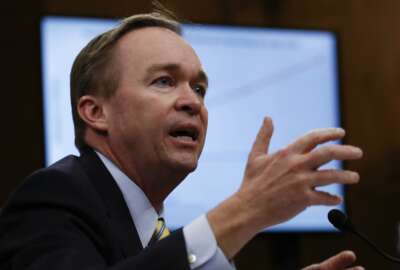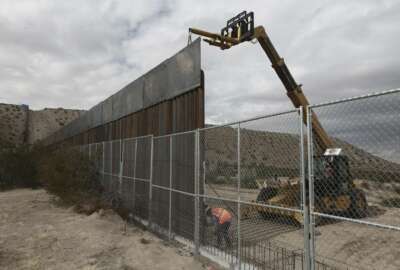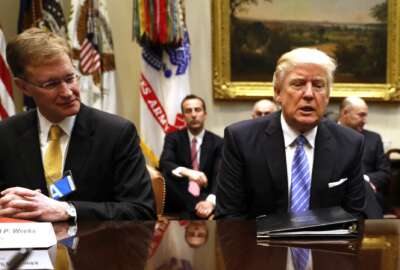
Emergency funding, DHS reprogramming could pay for border wall, House chair says
Congress may reprogram and reallocate resources in the Homeland Security Department, use emergency funding or some combination of both to pay for the construction...
President Donald Trump’s signature on an executive order is the first step toward building a physical wall along the southern border, but the future appropriations process in Congress could prove more difficult.
The order, which Trump signed at the Homeland Security Department headquarters Wednesday, instructs the department to “immediately plan, design and construct a physical wall along the southern border, using appropriate materials and technology to most effectively achieve complete operational control of the southern border.”
Further action will go through the House Homeland Security Committee, among others, since Congress will need to appropriate funding the wall’s construction, the committee’s chairman, Rep. Mike McCaul (R-Texas) said.
“He wants to send a signal that he’s going to take action like a CEO would, but unlike a CEO, he does have to go through Congress,” McCaul said of Trump’s border security plans during a Jan. 25 Bloomberg Government breakfast in Washington. “He will on these issues.”
DHS Secretary John Kelly will be responsible for developing the long-term funding requirements for the project and will prepare congressional budget requests for future fiscal years.
“There could be an emergency spending-type bill, like a border surge emergency supplemental bill to basically complete the Secure Fence Act in the beginning, and I think that could come out of emergency spending funding,” McCaul said. “Reprogramming within the Department of Homeland Security will be something we’ll be looking at. I think the dollars, personally, I don’t think they’re there. We can offset some, but not to the tune of the cost. This is probably a $10 billion-20 billion project, and you’re not going to be able to offset that without completely undermining a national security agency. The money is going to have to come from somewhere. Upfront, we could have some emergency spending, whether it’s OCO or some other account, and some reprogramming to pay for this.”
More Budget News
The executive order also calls for DHS to hire 5,000 more border patrol agents, subject to “available appropriations.”
The Office of Personnel Management should take “necessary” and “appropriate action” to meet new hiring needs to meet the requirements of the President’s order.
Customs and Border Protection has struggled to recruit and hire new agents quickly in the past. CBP spent 2016 focused on whittling down the time it takes to hire new talent, then-deputy commissioner Kevin McAleenan said during a Dec. 1 Homeland Security and Defense Business Council panel discussion in Washington.
In the past, it took more than 400 days to bring on a new employee, he said. The agency last year condensed its 12-step hiring process into measurable segments that job applicants can complete more quickly.
The 2017 National Defense Authorization Act eliminated the polygraph requirement for border patrol agents who apply to CBP, which McAleenan had said previously contributed to the slow hiring process.
Though the order didn’t provide specifics, the President also wants the DHS Secretary and Attorney General to allocate resources and personnel to “construct, operate, control or establish contracts to construct, operate or control facilities to detail aliens at or near the land border with Mexico.”
DHS and the Justice Department will likely send more Immigration and Customs Enforcement officers, as well as immigration judges, to the region, but the order didn’t offer specific numbers.
In his address at DHS Wednesday afternoon, Trump emphasized the physical construction of the southern border wall, but the project may incorporate other agency operations, McCaul said.
“[It’s] a physical barrier, which will include a myriad of assets, multi-layered defense,” he said. “There will be not only bricks and mortar but [also] fencing, aviation assets … technology, censored surveillance to achieve 100 percent visibility.”
Copyright © 2025 Federal News Network. All rights reserved. This website is not intended for users located within the European Economic Area.
Nicole Ogrysko is a reporter for Federal News Network focusing on the federal workforce and federal pay and benefits.
Follow @nogryskoWFED





